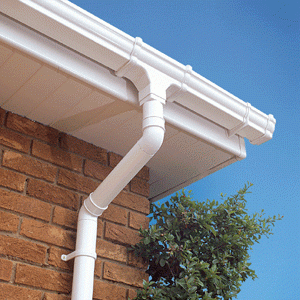5 Killer Quora Answers To Replacing Guttering And Downpipes
페이지 정보

본문
 The Importance of Replacing Guttering and Downpipes
The Importance of Replacing Guttering and DownpipesThe proper guttering and downpipes direct rainwater away from your house to prevent flooding foundation damage, soil erosion and growth of mould. Regular maintenance will ensure that they remain free of obstructions and function effectively.
 The size of your downpipes should be in line with the roof size is essential to ensure proper drainage of water. This will ensure that the performance is optimal.
The size of your downpipes should be in line with the roof size is essential to ensure proper drainage of water. This will ensure that the performance is optimal.Placement
Gutters are intended to take rainwater and drain it. However if they're damaged or installed improperly, water may seep down the walls and foundations of a home. This can lead to structural damage, soil erosion, flooding and damp crawlspaces and even damage to the roof. Proper guttering and downpipe installation is essential to prevent this from happening, and is often controlled by building regulations.
Downpipes are drainage pipes that connect to the spouting system or guttering. They channel rainwater and melting snow (in cold climates) away from your house using gravity. They also shield walls and foundations from water damage, and help prevent rotting fascia boards and leaks.
A proper downpipe size is crucial to a gutter and downpipe repairs near me system's efficiency as over-sized downpipes may cause overflowing and if they are placed too close to the home can increase the chance of flooding. The size of the downpipe will depend on the roof pitch and the size. A rule of thumb is one downpipe per 9m (30ft).
There are a variety of downpipe materials to choose from, including metal, plastic, and vinyl. Metals such as galvanised metal and aluminium are tough, corrosion resistant, and durable in most weather conditions. Plastics like PVC or vinyl are light and affordable. They are also simple to install. However, they can be susceptible to UV degradation in harsh sunlight.
After the gutters and downpipes have been installed, seal them together using high-quality siliconeized caulking. This will ensure that the joint is water-proof and any screws or bolts are properly sealed to prevent water from penetrating them. It is also necessary to apply the caulking to any seams, caps on the end and downpipe outlets, to prevent leaks and obstructions.
Materials
Gutters and downpipes must be in good working order to ensure that water flows effectively. To avoid flooding, blockages and foundation damage, as well as costly repairs, it's essential to keep them clean and maintain them regularly.
Before beginning, make sure you have the proper items for your gutter replacement project. This includes the gutters, hangers, downpipes, connectors, sealant, and screws. It is also crucial to plan your project carefully and be safe. This will include setting up a sturdy ladder and taking the appropriate precautions, including personal protective equipment (PPE).
Mark the location of the downpipe on the wall with a pencil if you are installing new guttering. You can then take a measurement of the length of guttering to determine the length you will have to cut.
Leave a small amount of extra length after cutting the guttering to allow expansions lines and click-fit fittings. After you've cut the guttering, use a file to smooth any burrs. Make sure to spray silicone lubricant on the connectors before installing them.
Gutter hangers are responsible to support the weight of your rain gutters. It's therefore important to replace them if they become corroded. They're usually attached to the fascia board with sheet pop rivets or metal screws. It is also recommended to replace the gutter brackets and ties.
Downpipes are used for draining rainwater away from your property. They reduce the risk of flooding in basements and soil erosion. They also assist in stop water from entering crawl spaces and wood rot. A well-designed downpipe drainage system helps protect the roof, by reducing stress on the structure.
You can do some maintenance and repairs to your downpipe yourself. However, a professional is needed how much to replace gutters and downpipes uk tackle more serious issues like blocked pipes or damaged pipes that aren't cleared up through flushing or leaks that are caused by broken areas or gaps. Certified gutter contractors have the equipment, tools and expertise necessary to inspect and resolve any downpipe issues. They are also capable of replacing guttering and downpipes in the correct sizes and types to ensure the best efficiency.
Installation
Downpipes are vital for your guttering system, ensuring that the roof's water is drained effectively. Without them, your guttering might overflow or result in excess moisture, leading to a range of issues for your home such as landscaping damage flooding in crawl spaces and basements and structural damage to the home and the growth of mould.
When selecting your downpipes, it is recommended to select quality materials to ensure they can drain away the rainwater efficiently. You'll also want to select the right size downpipes according to the amount of rainwater you will divert and the size of your roof's surface. There are many sizes and styles to choose from and include round downpipes for a classic appearance and square ones that are suitable for modern and conventional homes.
After you have selected your downpipes, they will need to be put on the wall of the home. This is a job that can be completed either by yourself, or by hiring a professional gutter installation service. If you decide to do it yourself, begin by marking the location of each downpipe using an upward-facing chalk line. This will help keep them straight, and will ensure that they are in the correct position. After that it's time to connect the downpipes onto their brackets. They should be set at each end of the downpipe in order to prevent them from moving with time, especially in the case of eaves that are low.
If you have a large amount of rainwater that has to be diverted, it is an ideal idea to install a downpipe extension in your gutters. This will ensure that the water is directed to the right place. If your downpipes and gutters aren't properly positioned, they can cause standing water that can lead to erosion in the yard or cracks in the foundation.
It is crucial to examine the downpipes for gaps or leaks. They should be caulked to prevent water from entering into your home. You should also apply caulk to the joint and the end caps of the downpipes to ensure that they are waterproof.
Maintenance
Guttering and downpipes form an integral part of a house. They help to manage the water flow and direct it away from crucial areas like porches, doorways, and gardens. They also shield the foundations and roof from water damage. As time passes, guttering and downpipe repairs and drainpipes can be clogged with debris, making them less efficient in their work. This can be prevented with regular cleaning and maintenance of the guttering system.
Maintenance of gutters should be done each year to ensure the gutters are working correctly. It involves examining and fixing the downpipes, making sure they aren't blocked, checking the gutters for leaks and cracks, and ensuring all the brackets are properly aligned. If sections of the guttering have moved and need to be fixed, the correct method of re-aligning should be followed to prevent more issues.
The downpipes are an essential component of the guttering system, assisting to disperse rainwater from the roof. When they are installed in the gutter they should be placed at least a metre away from the house. This will help keep water away from important areas. It is best to keep the distance between downpipes and the house as long as you can. This will lower the chances of leaks.
Over time, downpipes may become clogged by moss and wet leaves. Regular cleaning, along with the use of a drain unblocker can help keep your downpipes free. You can purchase downpipe connectors that fit into your downpipes and help prevent blockages.
You should also consider adding an outlet for your downpipe in your gutter system. This will assist in directing water into the new gulley or soakaway. Install a plumb line on the fascia and position it directly above the drain to determine the proper position of the running outlet.
You can patch any holes that you discover in your gutters using roofing cement. The roofing cement should be applied on the inside of the gutter and then smoothed out. Alternately, you can apply specialist gutter sealants. They are perfect for iron gutters because they have a protective anti-rust coating that shields the material from rust, moisture, and other damaging elements.
- 이전글15 Upvc Door Handles Benefits You Should All Be Able To 24.11.24
- 다음글Type my best reflective essay on hillary 24.11.24
댓글목록
등록된 댓글이 없습니다.